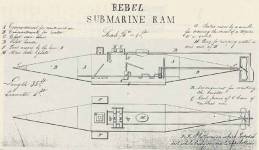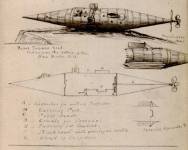 | Find Louisiana State Museum on Facebook |
 | Find Louisiana State Museum on Twitter |
| 2016 Sunset Report |
| OLG & DCRT Strategic Plan 2020-21 through 2024-25 |

- Quality - Louisiana State Library
85% of the users of the State Library indicated that the State Library's services and resources was a good value for the State.Source: The Impact of the Louisiana Department of Culture, Recreation and Tourism on Louisiana's Economy and Quality of Life for Louisiana's Citizens - June 2006
- Louisiana's deep water ports
Did you know that Louisiana's five deep water ports handle more than 457 million tons of U.S. waterborne commerce a year? - Quality - Louisiana State Library
85% of the users of the State Library indicated that the State Library's services and resources was a good value for the State.Source: The Impact of the Louisiana Department of Culture, Recreation and Tourism on Louisiana's Economy and Quality of Life for Louisiana's Citizens - June 2006
- Atchafalaya Heritage Area
The Atchafalaya Heritage Area has been designated by Congress as a National Heritage Area.
- Impact - DCRT Returns Investment Dollars to Louisiana
For every state tax dollar spent by the Department of Culture, Recreation and Tourism, $5.86 is returned to the State Treasury and citizens of Louisiana.Source: The Impact of the Louisiana Department of Culture, Recreation and Tourism on Louisiana's Economy and Quality of Life for Louisiana's Citizens - June 2006
- Impact - Louisiana Office of Tourism Tops Returns on Investment
$13.90 is the return on investment for every dollar spent by the Office of Tourism. Over 175,000 people were directly employed by the Louisiana travel and tourism industry in 2004. In terms of production, $5.9 billion (3.8%) of Louisiana's Gross State Product was directly attributable to expenditures by visitors to LouisianaSource: The Impact of the Louisiana Department of Culture, Recreation and Tourism on Louisiana's Economy and Quality of Life for Louisiana's Citizens - June 2006
- Impact - Supporting the Louisiana Arts
Every dollar in state support for the Arts leverages $7 in earned and contributed revenue. Louisiana's cultural enterprises provide nearly 144,000 jobs for Louisiana citizens, accounting for 7.6% of total employment. Arts has a total economic impact of $934 million in Louisiana.Source: The Impact of the Louisiana Department of Culture, Recreation and Tourism on Louisiana's Economy and Quality of Life for Louisiana's Citizens - June 2006
- Impact - Visitors Generate State Revenue
In terms of tax revenues, visitor spending accounted for $677 million of 2004 Louisiana revenues, or 8.3% of the total 2004 State Budget.Source: The Impact of the Louisiana Department of Culture, Recreation and Tourism on Louisiana's Economy and Quality of Life for Louisiana's Citizens - June 2006
- Quality - Louisiana State Museums
95% of State Museum's visitors strongly agreed or agreed that the State Museum was an educational experience and has expanded their awareness of Louisiana's cultural history.Source: The Impact of the Louisiana Department of Culture, Recreation and Tourism on Louisiana's Economy and Quality of Life for Louisiana's Citizens - June 2006
- Quality - Historic Preservation and the Arts
78-80% of Louisiana residents believe that historic preservation and arts are important and should be high priorities.Source: The Impact of the Louisiana Department of Culture, Recreation and Tourism on Louisiana's Economy and Quality of Life for Louisiana's Citizens - June 2006
- Impact - Louisiana Serve Program
The Louisiana Serve Program in the Office of Lieutenant Governor returns 2.8 million in non-state revenue to Louisiana. - Impact - Louisiana State Museum
The Office of State Museum returns $6.99 for every tax dollar spent.Source: The Impact of the Louisiana Department of Culture, Recreation and Tourism on Louisiana's Economy and Quality of Life for Louisiana's Citizens - June 2006
- Impact - Louisiana State Parks
Visitor spending at Louisiana State Parks returns $3.23 in state taxes for every dollar spend on operating and maintaining all our beautiful parks. Out-of-state visitors to Louisiana State Parks spent almost $12 million in Louisiana and produced an economic impact of over $24 million. Louisiana residents spent another $29.2 million while visiting the parks.Source: The Impact of the Louisiana Department of Culture, Recreation and Tourism on Louisiana's Economy and Quality of Life for Louisiana's Citizens - June 2006
- Impact - Scenic Byways Program
The Scenic Byways program leverages $1.56 for every dollar spent by the program.Source: The Impact of the Louisiana Department of Culture, Recreation and Tourism on Louisiana's Economy and Quality of Life for Louisiana's Citizens - June 2006
- Louisiana State Parks and the National Register
Thirteen Louisiana State Parks sites are on the National Register of Historic Places. They include:
• Audubon State Historic Site
• Centenary State Historic Site
• Fort Pike State Historic Site
• Fort Jesup State Historic Site
• Longfellow-Evangeline State Historic Site
• Mansfield State Historic Site
• Marksville State Historic Site
• Plaquemine Lock State Historic Site
• Port Hudson State Historic Site
• Poverty Point State Historic Site
• Otis House at Fairview-Riverside State Park
• Rosedown Plantation State Historic Site
• Winter Quarters State Historic Site - Louisiana State Parks Visitation
Nearly two million people visited a Louisiana State Park last year. - Louisiana State Parks Grow and Renew
The Louisiana Office of State Parks has spent nearly $80 million in major construction projects since 2004, providing two brand-new parks and a new historic site, adding cabins and campsites to existing parks and building visitor center at one park, the preservation area and three historic sites. - Louisiana State Parks Wireless Internet
The Louisiana Office of State Parks provides free wireless internet access at all 20 recreational parks. Extensive coverage areas include most cabins, RV slips and campsites. - Louisiana State Parks Online Reservations
You can now make online reservations for cabins, campsites, lodges and group camps – at www.ReserveLaStateParks.com - Louisiana State Parks Honors National Parks Service Senior Pass Program
Visitors who hold an America the Beautiful Senior or Access Pass, and whose home State Park system honor the America the Beautiful passes for camping discounts, are entitled to a 50% reduction on camping fees at Louisiana State Parks. Certain restrictions apply, see State Parks' fees & facilities page for more information. - Louisiana State Parks Draw Media Attention
Louisiana State Parks sites have been featured in movie and television releases including "True Detective," CBS’ "Zoo," and "NCIS: New Orleans," "G.I. Joe: Retaliation," "Selfless," "Devil’s Due," and commercials for Popeyes and Toyota. - Capitol Park Welcome Center
The main meeting room in the Capitol Park Welcome Center is named after Margaret Taylor, wife of U.S. President Zachary Taylor. The couple resided in a small house near the present day location of Capitol Park until Taylor was elected to the Presidency.
| History | Identity | The Pioneer | Clues | Conservation |
The history of the Pioneer, however, may shed some light on the identity of the State Museum's submarine. At the beginning of the Civil War, President Abraham Lincoln ordered a blockade of all Southern ports. To augment his own Navy, Confederate President Jefferson Davis issued a proclamation inviting applications for letters of marque to encourage reprisal against Federal ships and property. Respondents were drawn to the Algiers dockyards and to vessels suitable for refitting as privateers.
Across the river at Leeds foundry, steam gauge manufacturers James McClintock and Baxter Watson constructed a submarine to use against Union gunboats patrolling Lake Pontchartrain. They would eventually partner with Horace L. Hunley, a wealthy lawyer and customs agent, to build a submarine with a menacing, streamlined appearance. After the war, McClintock described the vessel he and his partners christened the Pioneer.
- "…she was made of iron ¼ inch thick. The boat was of a cigar shape 30 feet long and 4 feet in diameter. This boat demonstrated to us that we could construct a boat that would move at will in any direction desired, and at any distance from the surface. As we were unable to see objects passing under the water, the boat was steered by compass…"
In March of 1862, the Pioneer's owners were granted a letter of marque by the Confederate government. A month later, New Orleans fell to the West Gulf Blockading Squadron commanded by David Glasgow Farragut. In the ensuing turmoil, the Pioneer was scuttled in the New Basin Canal.
The ship was quickly discovered in its watery grave and brought to shore. A Federal team of experts was dispatched to examine the "infernal machine" and later submitted their measured drawings to Fleet Engineer William Shock, who completed and forwarded them to Washington, D.C. for further study.

Drawing of the Louisiana State Museum Submarine by Historian Signey H. Schell
Courtesy National Archives

Courtesy of the Gilder Lehrman Collection
In 1865, three years later, Ensign David M. Stauffer of the Mississippi Squadron also make a sketch of the Pioneer. An engineer by trade, Stauffer documented the ships, forts, cannons, and buildings he encountered in the South. The first of two volumes he completed, "Louisiana Sketches," identifies the Pioneer resting on the bank of the New Basin Canal. The detailed rendering shows how the craft actually appeared (Shock's drawing was a mechanical one). Distinguishing characteristics depicted by Stauffer - iron plating, rivets, conning tower portholes - provide clear evidence of what the Pioneer looked like, and it is not the same vessel owned by the State Museum.

Louisiana State Museum submarine on bank of Bayou St. John at Spanish Fort, c 1900

Louisiana State Museum submarine, Spanish Fort Amusement Park, c 1895 (Photograph by George F Mugnier)

Louisiana State Museum submarine, Spanish Fort Amusement park, c 1895 (Photograph by George F Mugnier)

Louisiana State Museum submarine, Spanish Fort Amusement park, c 1895 (Photograph by George F Mugnier)

Louisiana State Museum submarine, Spanish Fort, c 1895 (Photograph by George F. Mugnier)

Louisiana State Museum submarine, Jackson Square, c 1945

Louisiana State Museum submarine under Presbytere arcade, c 1995

Louisiana State Museum submarine under Presbytere arcade, c 1995

Louisiana State Museum administrators inspecting submarine at Jackson Square, c 1952

Ironclad Ram Manassas under fire at Fort Jackson and St. Philip, April 24 1862

Drawing of the Louisiana State Museum Submarine by Historian Signey H. Schell

Rebel Submarine ram diagram

Moving the submarine into LSM

Moving the submarine into LSM















